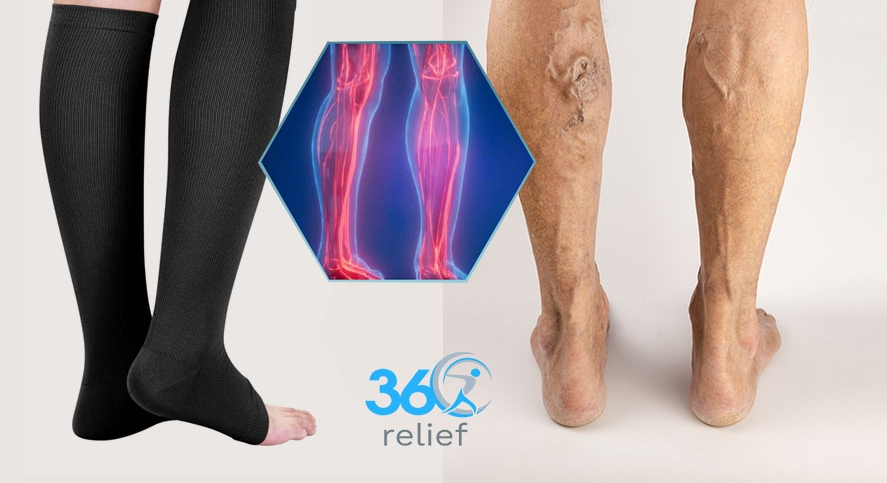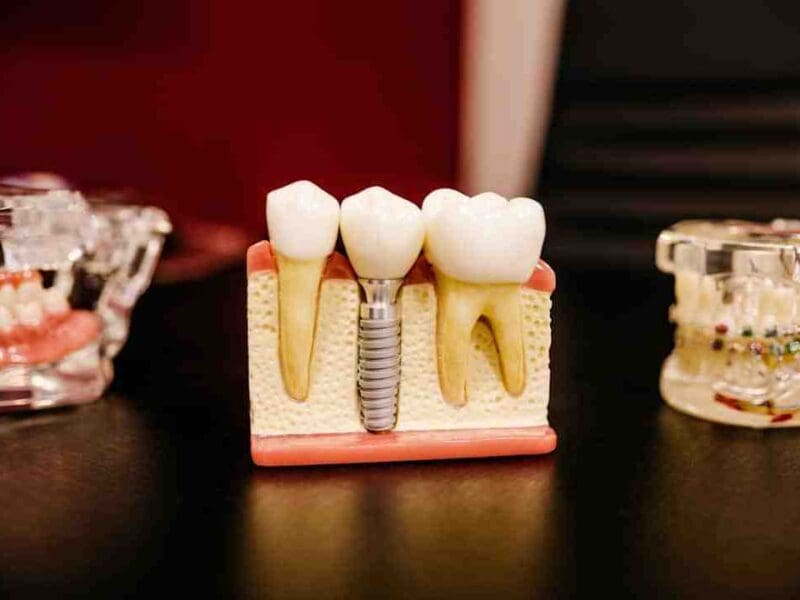
How Compression Socks Help with Deep Vein Thrombosis?
Deep Vein Thrombosis, DVT: Overview
Dep vein thrombosis, DVT usually occurs when a blood clot forms in a deep vein within the body. DVT usually occurs in the legs. The condition may cause leg pain, swelling, and other discomforts. However, sometimes, there are no noticeable symptoms, and diagnosing the problem becomes difficult. DVT can be dangerous because it results from a blood clot, and blood clots may go through the blood vessels and get stuck in the lungs, becoming the reason for pulmonary embolism – blocking blood flow. Both pulmonary embolism and deep vein thrombosis occur together, called venous thromboembolism, VTE.
DVT can be diagnosed through some radiological tests and is recovered through several treatment plans. Wearing medical compression socks is very helpful to minimise the symptoms of DVT. Check how these socks help reduce the symptoms of venous diseases. As well as this, you can get ideas on how to prevent deep vein thrombosis. So, let’s start here;
Common causes and risk factors of DVT
Anything that becomes the reason for blood clotting can cause deep vein thrombosis. However, the main causes of DVT are damage to a vein from inflammation or surgery. As well as this, any infection or injury may also damage your veins, resulting in DVT. The following are the common risk factors that may develop DVT:
Age: DVT can occur at any age; however, people older than 60 years are more prone to develop DVT.
Lack of movements: Muscle contractions help blood flow properly. When you do not move for a long time, the calf or leg muscles do not contract or squeeze correctly, increasing the risk of venous diseases, such as DVT. Certain medical conditions, such as paralysis or bed rest, may also restrict leg movements, causing DVT.
Injury or surgery: Injuries to the leg veins or surgical processes may increase the risk of DVT.
Pregnancy: Pregnancy increases pressure on the veins, especially on the veins in the legs or pelvis. As well as this, the blood clot risk may continue even six weeks after the baby’s birth.
Overweight: Being overweight may increase pressure on the veins in the pelvis or legs, causing DVT and other venous problems.
Inflammatory diseases: Inflammatory diseases, such as ulcerative colitis or Chron’s disease, may increase the risk of DVT.
Cancer: Some cancerous diseases may increase the substances in the blood that may cause blood clots. On the other hand, some kind of cancer treatments may also increase the risk of blood clots in the leg veins.
Common symptoms of DVT
When you suffer from the DVT, you may experience the following symptoms:
- Leg swelling: Blood clotting or DVT may cause your calf or leg muscles to swell.
- Leg pain: Leg pain is another common symptom of DVT. As well as this, you may also feel soreness or cramping that often starts in your calves.
- Skin discolouration: You may experience skin discolouration because of DVT. For example, your skin may turn red or purple depending upon your skin colour.
- Feeling of warmth: You may also experience a feeling of warmth in the affected areas.
What are compression socks?
Compression socks are specialised garments that provide your muscles with compression and support. They are like tights or pantyhose; however, they are made of different materials and used for specific purposes. Compression socks are different from other socks because of their elastic fabrics that fit tightly around your feet, ankles, calves, or thighs. However, compression socks are tighter around your ankles compared to your calves and thighs. Compression socks are of different types to meet certain conditions. Whenever you need to wear compression socks, you must consult your GP or healthcare professionals to know the best types according to your needs.
Types of compression socks
Compression socks are categorised based on their compression level. Take a quick review of the types of compression socks and their best uses:
-
- Compression socks with mild compression (15 – 20 mmHg compression level): These compression socks are suitable for everyday use. For example, people use them for sports recovery, travel, and other daily pursuits. However, these compression socks are not tight enough for medical recovery.
- Compression socks with moderate compression (20 – 30 mmHg compression level): Compression socks with compression levels from 20 – 30 mmHg are suitable for several venous diseases. For example, they are recommended to wear for spider veins, varicose veins, and mild oedema. In addition, these compression socks help improve blood circulation after surgery, promoting healing.
- Compression socks with mild compression (30 – 40 mmHg compression level): These compression socks are designed to offer the strongest compression level. These compression socks are suitable for people with DVT, severe swelling, or post-surgery concerns.
How do compression socks work?
Compression socks work in a unique way, helping prevent the symptoms of DVT or other venous diseases. As well as this, these are also considered the best way to prevent DVT among people susceptible to developing DVT.
The pressure exerted by the compression socks pushes fluid up the legs, allowing blood to flow freely from your legs towards the heart. Compression socks are not only best in increasing blood flow, but they also help with pain, swelling, and other discomforts. As pressure prevents blood pooling or clotting, compression socks are particularly recommended for DVT and other venous diseases.
How to prevent DVT?
If you have recovered from a DVT and want to prevent the risk of it in the future, follow the given practices:
- Always take the medications that your GP or healthcare professionals suggest taking.
- Keeping follow-up meetings with your GP or healthcare professionals will help your provider know how well your treatment is going on.
- You need to adopt a healthy lifestyle, preventing the chances of DVT. For example, moving your legs regularly, eating healthier foods, avoiding tobacco products, and managing body weight will help reduce the chances of DVT in the future.
People who never suffered from DVT previously but are at a high risk of developing DVT are advised to follow the given practices, preventing the risk of DVT:
- If you are involved in long-time sitting or standing, you need to move your legs or do some stretching exercises.
- If you have undergone a surgical process, take appropriate medications and wear compression socks to help prevent DVT.
- Take care of your diet routines and eat a healthy diet.
- You need to quit smoking and maintain a healthy body weight to prevent the chances of DVT.







